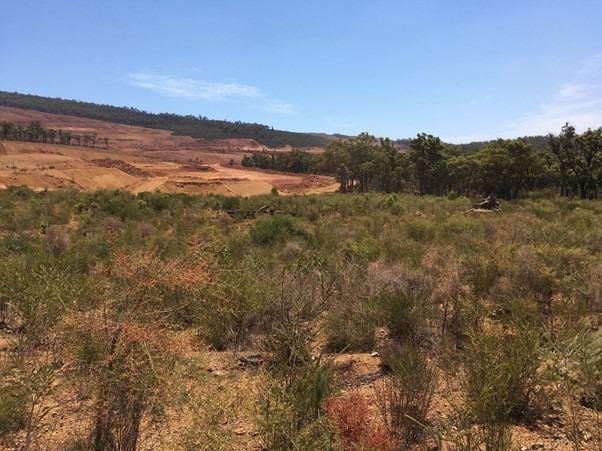The rehabilitation of ecosystems is a critical component of modern mining operations right across Australia, and represents best practice internationally.
 Areas of active mining, rehabilitation, and undisturbed native vegetation at the South32 Worsely Alumina mine site. Image Credit: Siegy Krauss WA DBCA
Areas of active mining, rehabilitation, and undisturbed native vegetation at the South32 Worsely Alumina mine site. Image Credit: Siegy Krauss WA DBCA
Now, researchers from Flinders University have used patterns in soil microbial communities to track progress and predict timeframes for post-mining recovery.
Published in the Journal of Environmental Management, the research examined changes in soil bacteria following revegetation at three case study minesites in south-west Western Australia.
Soil microbes are fundamentally linked to the restoration of degraded ecosystems, helping to underpin ecological functions and plant communities.
Microbes are increasingly used to study environments and inform their management, but typical analyses produce complex information not well-suited to managers’ needs.
The researchers demonstrated a new approach which compared the similarity of rehabilitated soil bacterial communities to nearby reference sites, representing the desired target natural ecosystem.
Lead author Dr Craig Liddicoat, a Research Fellow in Restoration Genomics from Flinders University’s College of Science and Engineering, said the research offered a significant step forward in the development of quantitative microbiota-based metrics for measuring rehabilitation success.
“After quite a complex analysis we saw simple patterns emerge. Over time, the rehabilitation sites were increasing in their similarity to the target ecosystems,” he said.
“The key was recognising that natural ecosystems from just a single location can be quite variable, and that variation needs to be accounted for if we are monitoring the progress of ecosystem recovery towards a target outcome.
“Our research showed that effective rehabilitation can set up a predictable trajectory of recovery, and in these post-mining examples it can take 40-60 years to reach the target.
“Nature-based solutions and restoring biodiversity are critical to addressing key challenges of the modern era, as highlighted in the UN declaration of 2021–2030 as the Decade on Ecosystem Restoration.
“However, restoration is technically challenging and requires considerable investment with a broad base of evidence to give the best chance of success.
“We recommend our new method to restoration managers who are considering how to incorporate soil biology into their ecological monitoring toolkit.”
The research was made possible through a collaboration between Flinders University, Kings Park Science (Western Australia Department of Biodiversity Conservation and Attractions), Murdoch University, CSIRO, University of Western Australia, University of Reading (UK), South32 Worsley Alumina, Iluka Resources Limited, and Alcoa of Australia. The study was supported by the Australian Microbiome initiative funded by NCRIS, and by Australian Research Council funding.